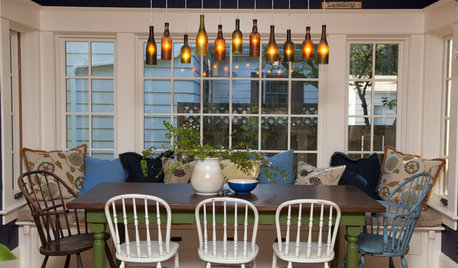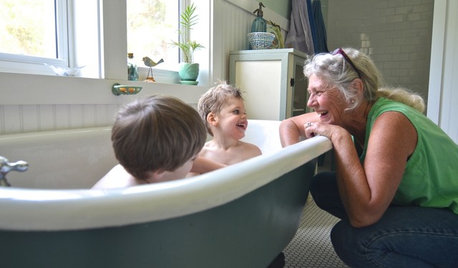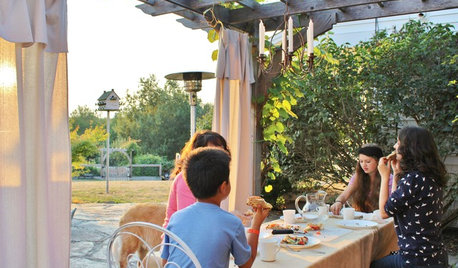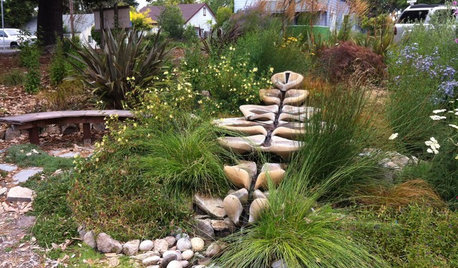Afternoon watering = waste of labor?
norem
15 years ago
Related Stories

MOST POPULAREasy Green: 23 Ways to Reduce Waste at Home
Pick from this plethora of earth-friendly ideas to send less to the landfill and keep more money in your pocket
Full Story
HOUZZ TOURSMy Houzz: Wasting Not, Wanting Not in a New Portland House
Salvaged and secondhand elements make for a home that's earth conscious, thrifty and beautifully personal
Full Story
HOUZZ TOURSHouzz Tour: A Frank Lloyd Wright Home, Lovingly Restored
In a 15-year labor of love, one dedicated Ohio couple focuses on conserving over remodeling, protecting an architectural legacy
Full Story
BATHROOM MAKEOVERSFrom Canning Porch to Beautiful Vintage Bath in Oregon
Thrifty finds and DIY labor transform a cramped space into a serene hotel-style bath on a budget
Full Story
HOUZZ TOURSMy Houzz: A Modern-Day Homestead Brings a Family Together
Their 5-acre Washington property, with sports court, swings, pizza oven and gardens, is a labor of love and communal playspace
Full Story
SAVING WATER11 Ways to Save Water at Home
Whether you live in a drought-stricken area or just want to help preserve a precious resource, here are things you can do to use less water
Full Story
GREAT HOME PROJECTSHow to Add a Solar Water Heater
Lower energy bills without a major renovation by putting the sun to work heating your home’s water
Full Story
INSPIRING GARDENSInside Houzz: A Waterfront Property Ditches the Grass for a Garden
New drought-tolerant plantings and outdoor gathering spaces help this California backyard take in the view without wasting space or water
Full Story
SAVING WATERXeriscape Gardens: How to Get a Beautiful Landscape With Less Water
Conserve water and make gardening much easier with the xeriscape approach’s 7 principles
Full Story
LANDSCAPE DESIGNNew Ways to Design With Water
Go beyond 3-tiered fountains and faux waterfalls to discover water's architectural possibilities
Full Story





trianglejohn
nwnatural
Related Professionals
Camas Landscape Architects & Landscape Designers · Lowell Landscape Architects & Landscape Designers · Middletown Landscape Contractors · Broadlands Landscape Contractors · Commack Landscape Contractors · Coram Landscape Contractors · Cordele Landscape Contractors · El Reno Landscape Contractors · Mission Bend Landscape Contractors · New Cassel Landscape Contractors · Placerville Landscape Contractors · Roswell Landscape Contractors · View Park-Windsor Hills Landscape Contractors · San Pablo Landscape Contractors · Grand Rapids Driveway Installation & Maintenanceplantman314
muddydogs
calliope
brian_zn_5_ks
calliope
sandy0225